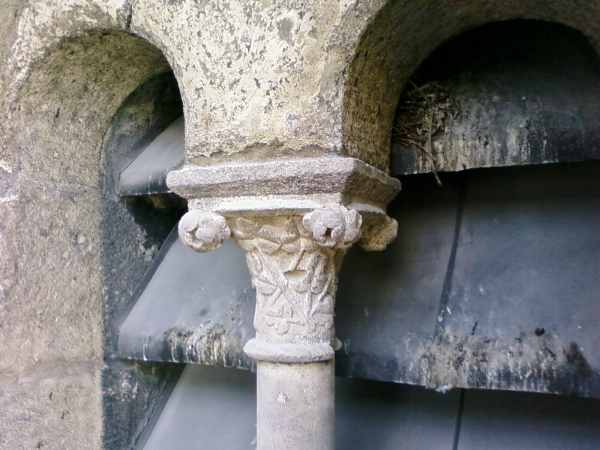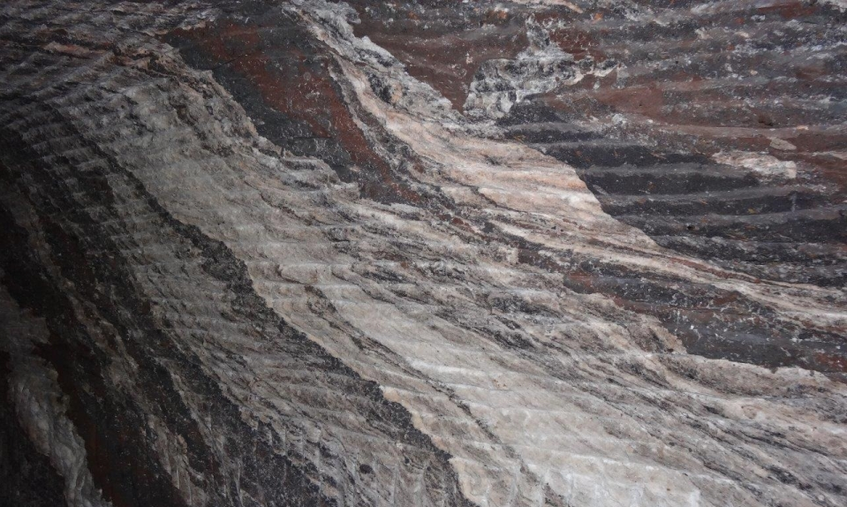Fieldtrips
We are offering three fieldtrips that we hope will be of interest to those attending the Symposium. All trips will be held on Friday 21 February 2020. The Vienna's building stones trip is free of charge, whereas the tunnel and salt mine trips have to be paid on site (via Credit Card or Cash; attendees will receive a receipt). Please note that all trips have a maximum number of attendees (in case of little interest a field trip may be cancelled). The final fee for the trips will depend on the number of attendees and whether lunch will be included or not. Please check back later for further information!
Stones for construction and decoration in Vienna´s 1st district architecture: a petrographical time travel from the 12th century to present days
- Field guides: Andreas Rohatsch & Matea Ban (Vienna University of Technology)
- Locality • Duration • Travel: Vienna City Center by foot for 3-4 hours, starting at 9 am at the Monument of the Empress Maria Theresia
- Maximum number of attendees • Costs: Limited to 35 attendees, free of charge

Capital located in the romanesque tower of St. Stephens Cathedral (13th ct.).
The excursion will present the most important building stones and decorative rocks of the city of Vienna and their physical properties, as well as their weathering and restoration problems. The development of a city like Vienna over almost two millennia also places special demands on the available building materials in the context of the geological framework at the border between the Eastern Alps and the Miocene Vienna Basin. The growth of Vienna from the Roman legionary garrison Vindobona to the end of the early modern period used building materials almost exclusively from a radius of about 70 kilometers, except for valuable sculptures and interiors large transport distances were accepted. Since the establishing of long-distance connections in the 19th and 20th centuries exotic rocks from all parts of the world were used.
The Semmering Base Tunnel: Challenging excavation conditions in a faulted rock mass with high overburden
- Field guides: Alexander Poisel (IGT Geotechnik und Tunnelbau, Salzburg) & Rainer Poisel (Vienna University of Technology)
- Locality • Duration • Travel: Full-day trip with bus (departure at 8 am from venue, arrival at ca. 6 pm)
- Maximum number of attendees • Costs: Limited to 30 attendees, EUR 100 approx. p.p. (payment at venue with Credit Card or Cash)
Around 27 kilometres in length and 14 years in making under challenging geological conditions: The Semmering Base Tunnel ranks amongst the most complex tunnel building projects in Europe.
The Semmering Base Tunnel (SBT) is situated in Austria / Europe and is part of the Baltic-Adriatic Corridor, which is one of the most important cross-Alpine lines in Europe. The tunnel is about 27.3 km long and is excavated from the portal at Gloggnitz and three intermediate construction accesses. The geological conditions in the project area are characterized by a tectonically extremely complex rock mass structure. The tunnel alignment passes through several tectonic nappe units, meets various crystalline rock complexes and Permo-Mesozoic cap rocks and is passed through by numerous tectonic fault zones.
The construction lot SBT 2.1 is located in the middle of the tunnel in the area of the emergency station. The excavation of the two single-track running tunnels start at the bottom of two 400 m deep shafts, which enable the supply to and disposal of materials from the tunnelling works. The running tunnels to the east are excavated by two tunnel boring machines (TBM), the ones to the west by conventional excavation based on the principles of the NATM.

Start excavation for tunnel boring machines.
The Hallstatt salt mine: Challenges of underground solution mining
- Field guides: Gerald Daxner (Salinen Austria AG) & Martin Schöpfer (University of Vienna)
- Locality • Duration • Travel: Full-day trip with bus (departure at 6 am from venue, arrival at ca. 7 pm)
- Maximum number of attendees • Costs: Limited to 14 attendees, EUR 100 approx. p.p. (payment at venue with Credit Card or Cash)
The Hallstatt saltmine is located in the Salzkammergut, an area in Austria where salt is produced continuously for over 7000 years. Nowadays salt is produced in an underground mine using brine wells. This production method is faced with many challenges, such as design of cavern fields, which is supported by FLAC3D numerical models conducted by Itasca Germany. During this field trip attendees will learn many aspects of solution mining in impure salt (average NaCl content is 55 vol.%), including the importance of Geology, the exploration and production with brine wells, and mine stability. Attendees will also have the opportunity to visit pre-historic mining sites where many exceptional archaeological finds were made, for example possibly the world’s oldest wooden staircase. Note that this fieltrip will be held in an actively producing mine (not the show mine open to tourists) so that the maximum number of attendees is strictly limited. This trip is not recommended for people suffering of claustrophobia.

Foliated rock salt from the Hallstatt saltmine.
